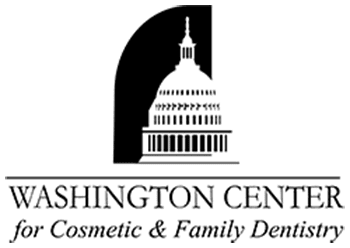Are you torn between charcoal and gel for achieving that dazzling white smile? At Washington Center for Cosmetic & Family Dentistry, we’ve compared these popular teeth whitening contenders to help you make an informed decision for your pearly whites.
Charcoal Whitening: Pros and Cons
Charcoal teeth whitening has become a popular trend, touted for its natural approach to brightening smiles. One of the significant advantages of charcoal whitening is its ability to absorb impurities; the activated charcoal binds to surface stains on the teeth, caused by coffee, tea, or red wine, and removes them when rinsed away. This method is also praised for being a cost-effective alternative to professional treatments. However, it’s essential to consider the cons. Charcoal can be abrasive and may lead to enamel erosion if used excessively. Additionally, its effectiveness is not as well-documented as traditional whitening methods, leaving some users questioning its long-term benefits.
While charcoal whitening offers a more natural route for those looking to enhance their smile, it’s crucial to balance this with the potential risks to dental health. For those curious about how celebrities maintain their dazzling smiles, exploring Celebrity Secrets to a Brighter Smile can provide insight into more proven and safe methods. Remember, whether choosing charcoal or gel, consulting with a dental professional can help ensure that you select the best option for your teeth whitening needs.
Gel Whitening: Effectiveness and Safety
When it comes to achieving a brighter smile, gel whitening has become a popular choice due to its balance of effectiveness and safety. The active ingredient in most gel whiteners is hydrogen peroxide or carbamide peroxide, which works to break down and remove surface stains on the teeth. Studies have shown that when used as directed, gel whitening can significantly lighten the color of teeth with minimal side effects. Most users report only temporary tooth sensitivity or mild gum irritation, which typically subsides shortly after the treatment period. It’s important to follow the product instructions or your dentist’s guidance to ensure the best results while minimizing potential risks.
While over-the-counter options are readily available, professional gel whitening services offer a higher concentration of whitening agents and a custom-fit application, leading to more dramatic and longer-lasting results. Dentists also provide expert oversight to ensure the health of your gums and enamel throughout the process. If you’re considering a professional teeth whitening treatment, it’s crucial to choose a reputable provider. For those in the capital area looking for a trusted service, Get Whiter Teeth in Washington DC can help you achieve the radiant smile you desire safely and effectively.
Application Process: Charcoal vs. Gel
When it comes to the application process, charcoal teeth whitening and gel-based whitening treatments offer distinct experiences. Charcoal products, typically in powder form, require you to wet a toothbrush, dip it into the powder, and then brush your teeth for a few minutes before rinsing thoroughly. This can be messy and may take some getting used to. On the other hand, gel-based whiteners often come in convenient kits with pre-filled trays or pens for precise application. These kits are designed for ease of use, allowing you to apply the gel evenly across your teeth with minimal fuss and no mess. Whether you prefer the natural approach of charcoal or the clinical precision of gel treatments, understanding their application processes is key to achieving your brightest smile.
Longevity of Results: Gel vs. Charcoal
When comparing the endurance of teeth whitening effects between gel-based treatments and charcoal products, it’s essential to consider the longevity of results. Gel whitening treatments, often containing hydrogen peroxide or carbamide peroxide, are known for their professional-grade outcomes that can last anywhere from six months to three years, depending on aftercare and lifestyle habits. In contrast, charcoal-based whitening solutions may provide a more immediate but temporary brightness, with results that typically fade more quickly over a few weeks to a couple of months. For those seeking a longer-lasting, pearly white smile, gel treatments are the preferred choice, offering a more durable and scientifically backed solution to teeth discoloration.
Cost Comparison: Charcoal and Gel Options
When considering teeth whitening solutions, budget plays a pivotal role in decision-making. Charcoal teeth whitening products are generally known for their affordability, with a range of options from powders to toothpaste that can cost significantly less than professional treatments. On the other hand, gel-based whitening systems, especially those provided by dental professionals, often come with a higher price tag due to their advanced formulations and the cost of in-office application. However, over-the-counter gel kits offer a middle ground, balancing efficacy and cost. Ultimately, while charcoal options may be more wallet-friendly upfront, gel-based treatments could provide more value over time through longer-lasting results. It’s essential to weigh both the immediate and long-term costs when choosing the best teeth whitening method for your needs and budget.
Conclusion
For personalized advice on maintaining a bright smile, call Washington Center for Cosmetic & Family Dentistry at (202) 363-2500, and don’t forget to read our reviews on Google Maps.
